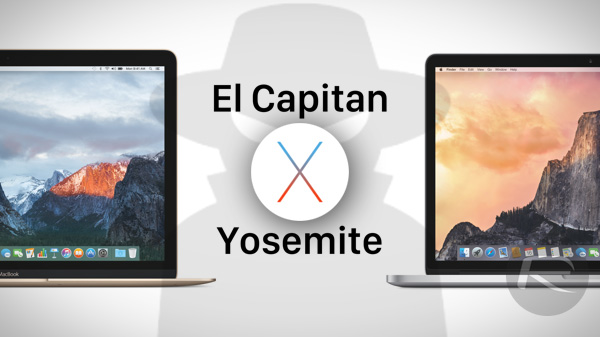

- UPDATE FROM YOSEMITE TO EL CAPITAN FOR MAC UPDATE
- UPDATE FROM YOSEMITE TO EL CAPITAN FOR MAC FULL
- UPDATE FROM YOSEMITE TO EL CAPITAN FOR MAC MAC
- UPDATE FROM YOSEMITE TO EL CAPITAN FOR MAC WINDOWS
That said, the quality of the results from these data sources needs to be tightened up. So Spotlight gets smarter, we get to be lazier, and it should all work out. A lot of us want to type, “how do I delete my Facebook account” into Google, rather than carefully crafting a string of search terms. I like this approach, because the fact is that many people search using natural language queries regardless of whether their search engine of choice supports it. It also means you can type queries like “pdfs from june 2013” or “presentations from august 2012” into Spotlight or Finder and actually get the result you’re expecting.

Yes, this means you should be able to type “san diego chargers standings” into Spotlight and immediately be given the bad news from the AFC West, or “phoenix az weather” and get the bad news from the desert west. Spotlight’s natural lanaguage support means you can type queries like, “pdfs from october 2014” and Spotlight will show the proper results.
UPDATE FROM YOSEMITE TO EL CAPITAN FOR MAC WINDOWS
When you click it, you see the two windows slide back into their place in the Mission Control landscape. You can also drag a window to the top of your screen, and Mission Control will automatically activate with the Spaces Bar expanded, so you can quickly toss a window into a new or existing workspace.įinally, in a boost to the new Split View feature, if you move your cursor over a space that contains two apps in Split View, you’ll see a small icon that allows you to blow the Split View apart-bringing both windows back to your existing workspace. When you move your cursor over the Spaces Bar, it expands. First, it’s collapsed by default, giving more space to your windows when you activate Mission Control. The Spaces Bar-that strip at the top of the screen that appears when you activate Mission Control-has also gotten a major upgrade. This means that a window that’s in the top-right corner of the screen will generally stay near the top-right corner when Mission Control is activated. And when you engage Mission Control, your windows don’t fly all over the place like a giant game of 52 Pickup-they slide around in order to bring every window into view, sure, but the feature keeps geography in mind. Every window gets its own thumbnail, rather than piling all of an app’s windows in a big stack. Mission Control now does a much better job of organizing and presenting your open windows. The entire feature feels friendlier and makes more sense than it ever has before. Perhaps my favorite addition, though, is to Mission Control itself. When you engage Mission Control, app windows are displayed in a way that mimics their actual placement on your desktop.

UPDATE FROM YOSEMITE TO EL CAPITAN FOR MAC FULL
If you’re one of those people-or if you’ve always been tempted to improve how you organize your workspace, I’ve got good news for you: El Capitan offers quite a few boosts to Mission Control and Full Screen Mode.
UPDATE FROM YOSEMITE TO EL CAPITAN FOR MAC MAC
(I am one of those people.) My gut feeling is that there’s a devoted (but small) subset of Mac users who love using Mission Control (formerly Exposé) to arrange their windows and workspaces, or frequently use Full Screen mode for apps. We all use our Macs in different ways-and even the same person can use a giant 5K iMac in a different way than they use an 11-inch MacBook Air.
UPDATE FROM YOSEMITE TO EL CAPITAN FOR MAC UPDATE
(It’s just that some of them may need an update first.)īottom line: I’ve found El Capitan to be a stable update, but you should always back up your system and check with the makers of your most important apps about compatibility before installing it. You can turn off System Integrity Protection if you absolutely need to, but it seems like most apps will be able to function just fine with it turned on. This is a good thing-but a few apps, including Default Folder X and SuperDuper, relied on that same vector to do their jobs.

One of the security improvements in El Capitan is a feature called System Integrity Protection, which clamps down on the ability of malware to hijack your Mac by masquerading as a user with system-administration privileges. Several of the apps I use, including SuperDuper and Default Folder X didn’t work properly with El Capitan, but SuperDuper has already been updated to regain compatibility and Default Folder X has a new version on the way (and a workaround in the meantime). Most major OS X upgrades feature a lot of under-the-hood security improvements, which is a good reason to stay up to date, but some of those changes can also break software. In the case of El Capitan, a few of the apps and utilities I rely on weren’t initially compatible, but most have already been updated as a result of Apple’s summer-long testing period.


 0 kommentar(er)
0 kommentar(er)
